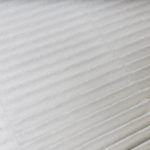Where The Germs Grow

Regular vacuuming is unlikely to get rid of all the dust in your home – or the bacteria that live in it. A new study from the University of Oregon found that the more daylight that enters a room, the fewer germs the area contains. The researchers found that dust in dark rooms contains 12 percent live bacteria capable of reproducing compared to 6.8 percent in rooms exposed to daylight and 6.1 percent in those exposed to ultraviolet light. For the study, the team constructed 11 identical climate -controlled miniature rooms and seeded them with dust collected in residential homes. The windows of the mini-rooms were glazed to transmit either visible, ultraviolet or no outdoor light. After 90 days, the researchers collected and analyzed the dust to determine its bacterial content. Study leader Ashkaan Fahimipour noted that we spend most of our time indoors, “where exposure to dust particles that carry a variety of bacteria, including pathogens that can make us sick, is unavoidable.” He added that more research is needed to understand the underlying shifts in the dust microbiome following exposure to light, and their causes.
That knowledge could lead to better building design to access daylight and reduce the risk of dust-borne infections. In the meantime, let the sunshine in.
Source:
Ashkaan K. Fahimipour et al, “Daylight exposure modulates bacterial communities associated with household dust.” Microbiome, October 18, 2018, doi org/10.1186/s40168-0559-4
Also In This Week’s Bulletin:













